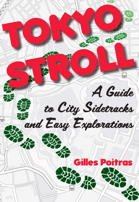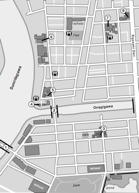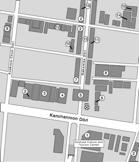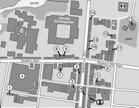











Tokyo Stroll Supplement: Katsushika Ku

This page is for locations in the Katsushika Ku area of Tokyo. This neighborhood is mostly not part of my book Tokyo Stroll.
For information on Tokyo Stroll and this web supplement see Tokyo Stroll Supplement home page
For users of the Organic Maps, Maps.Me and Google Maps apps the items below have bookmarks you can import into those apps to make navigation easier.
Instructions and links are on the Viewing Locations in Organic Maps, Maps.Me, Google Maps, or Google Earth page.
Some entries on this page may include a note that says "Description to be added soon ." These entries are for items I felt should be listed even if the description is not ready to assist those who wish to plan a trip. When possible I included a link to an official web page, I suggest also doing web searchs for more information.
Katsushika-ku (葛飾区)
The land here is low lying, the highest point is 3 meters and the lowest at 0. There are three rivers, the Edogawa, Nakagawa, and Ayasegawa, that run through the area. The water table is so high that just digging a few feet usually means you hit mud. For archaeological research this means that relics made of organic materials are preserved since being in mud reduces rot. Everything from lacquer ware, wooden combs, plant material etc. have been found. In the kofun period enough soil had been deposited by the rivers that the first known villages were settled on the resulting embankments. A few kofun have also been found in Katsushika. The earliest documents related to this area are from the Nara Period. In the Edo Period there was further agricultural development here including the establishments of several irrigation canals. There were still many small lakes and marshes so it also became a popular place among the samurai for falconry and among the commoners for relaxation. While Katsushika-ku is most famous for the Shibamata neighborhood (see Tokyo Stroll pg. 343-352) there are many other places folks may find interesting in this part of Tokyo. Katsushika-ku was mainly developed in the Shōwa Period and suffered little damage in WWII. The lack of direct access to much of Tokyo for commuters has helped keep the area unchanged in many ways as developers left this part of Tokyo largely alone. This means many parts of Katsushika-ku have an old fashioned feel not found in much of Tokyo.
Official pages for each of the ku of Tokyo will have sections of interest to visitors. These will likely be labeled as dealing with culture, tourism, or events.
Katsushika-ku official site: https://www.city.katsushika.lg.jp
Aoto Shrine / Aoto Jinja (青砥神社)
Founded in 1576. The original name of the shrine was Sansha Myōjin, the name was changed to Shirahige Jinja in 1872. The Aoto Jinja name was adopted after Hakusan Jinja was merged with this shrine in 1943. Five more local shrines, Takagi, Hachiman, Kitano, Kuzunoha Inari, Sui, were merged into it in 1960 and the shrine was rebuilt in 1961 as the buildings from 1881 were in bad shape. Later as a result of local road work another shrine, Aono Fujitsuna which had been located in the Kasai Castle Ruins, was merged with Aoto Jinja. All of these mergers resulted in many kami being enshrined here. They are: Sarutahiko Ōkami, Tateminakata no mikoto, Ukanomitama mikoto, Izanami no mikoto, Takami Musubi no kami, Hondawake no mikoto, Sugawara no Michizane, Mizuhanome no kami, and Aoto Fujitsuna. Aoto Fujitsuna was actually an official of the Kamakura Shōgunate known for his righteousness and honesty whose spirit was enshrined here.
NEAREST TRAIN/SUBWAY STATION: Aoto Station (Keisei Electric Railway Keisei Main Line, Keisei Electric Railway Keisei Oshiage Line)
ANNUAL FESTIVAL: September 9th
WEB: http://www.aoto-jinja.com
Captain Tsubasa Zō / Captain Tsubasa Statues (キャプテン翼 像)
Nine statues of characters from the Captain Tsubasa manga and anime are in the neighborhood of Yotsugi and Keisei-Tateishi stations. The stations have maps of the statue locations which you can pick up. Only two of the statues are life sized the rest are smaller.
THE STATUES NORTH OF THE RAIL LINE ARE:
NEAR: Yotsugi Station (Keisei Electric Railway Keisei Oshiage Line)
- Hyuga Kojirō in Yotsugi Park
- Nakazawa Sanae in front of the Katsushika Post Office
- A young Ōzora Tsubasa in Yotsugi Tsubasa Park
- Roberto Hongō and Ōzora Tsubasa on the Yotsugi Medaka No Komichi (Medaka Path)
NEAR: Keisei-Tateishi Station (Keisei Electric Railway Keisei Oshiage Line):
- Wakabayashi Genzō in Tateishi Michi Hiroba
- Ōzora Tsubasa (doing a Twin Shoot) is at the Tokyo Metropolitan Minami Katsushika High School main gate.
THE STATUES SOUTH OF THE RAIL LINE ARE:
NEAR: Yotsugi Station (Keisei Electric Railway Keisei Oshiage Line):
- Ishizaki Ryō in the Yotsugi station square pocket park
- Misaki Tarō in Shibue Park
NEAR: Keisei-Tateishi Station (Keisei Electric Railway Keisei Oshiage Line):
- Ōzora Tsubasa in the Tateishi 1-chōme Children's Park
NOTE: I have bookmarked the location of each statue in the maps.me bookmarks.
WEB: Captain TSUBASA Bronze Statue Map: https://www.gotokyo.org/book/en/list/5603/
Gohōzan Kumano Shrine / Gohōzan Kumano Jinja (五方山 熊野神社)
This shrine is said to have been founded by the famous Onmyōji Abe no Seimei in the Heian Period in a five sided lot on which the shrine remains in today. This is the only shrine in the Kantō region associated with Abe no Seimei and is the oldest shrine in Katsushika. In the Edo Period the shrine was often visited by the shōguns Tokugawa Iemitsu and Tokugawa Yoshimune when they went hawking in the area. While the official name of the shrine is Kumano Shrine the shrine's website uses the older name of Gohōzan Kumano Jinja . Locals also call this shrine Tateishi Kumano Jinja because of its location in the Tateishi district. The enshrined kami are: Izanagi no Mikoto, Hayatamao no Mikoto, and Kotosakao no Mikoto. The shrine crest sports a Yatagarasu crow, associated with the great shrines of Kumano surrounded by a pentagonal shape, associated with Onmyōdō. The Yatagarasu also shows up on various objects at the shrine. The two sacred camphor trees on either side of the main hall are said to be about 370 years old and are referred to as the Meoto-kusu (camphor tree couple). Major restoration work was done on the main hall in 1980. The shrine is also unique in that it has three shime, sacred horses, these were once common at many shrines but today are rare. The horses participate in some events including those that take place at the Kumano Kindergarten next door. This kindergarten was founded in 1949 and is the first associated with a shrine in Tokyo. The shrine is also associated with figure skater Ha'nyū Yuzuru and became popular with his fans. The reason for this association is that he used the music piece "Seimei" from the Japanese movie "Onmyōji" in his performance in the 2015 World Figure Skating Championships.
NEAREST TRAIN/SUBWAY STATION: Aoto Station (Keisei Electric Railway Keisei Main Line, Keisei Electric Railway Keisei Oshiage Line)
WEB: https://kumano-kids.com
Horikiri Iris Garden / Horikiri Shōbuen (堀切菖蒲園)
A lovely iris garden near the Arakawa estuary which opened in 1975. The garden is actually part of the remnants of an Edo Period iris garden, one of several that once were in the area. In the garden there is the Seikantei where you can enjoy food and beverages.
NEAREST TRAIN/SUBWAY STATION: Horikirishōbuen Station (Keisei Electric Railway Keisei Main Line)
WEB: https://www.city.katsushika.lg.jp/institution/1000096/1006888.html
Horikiri Tenso Shrine / Horikiri Tenso Jinja (堀切天祖神社)
Description to be added soon
NEAREST TRAIN/SUBWAY STATION: Horikirishōbuen Station (Keisei Electric Railway Keisei Main Line)
WEB: https://www.horikiri-tensojinja.jp
Intake Towers of the Kanamachi Purification Plant / Kanamachijōsuijō no shusui-tō (金町浄水場の取水塔)
Two water treatment plant intake towers may seem like something only a water engineer would be interested in. However, these twin structures, the first one no longer exists, are interesting bits of architecture in their own right. The second tower, Dai 2 shusui-tō (第2取水塔), which is the one with a conical roof, was built in 1941. The third tower is the Dai 3 shusui-tō (第3取水塔). They can be approached on the pathway next to the river on the one on top of the levee. The second tower also has a stairway connecting the two pathways. By the way the south exit of JR Kanamachi Station has a bench with a small replica of the tower.
NEAREST TRAIN/SUBWAY STATION: Keisei Kanamachi Station (Keisei Electric Railway Keisei Kanamachi Line), Kanamachi Station (JR Jōban Line (Local), Shibamata Station (Keisei Electric Railway Keisei Kanamachi Line)
Kameari Katori Shrine / Kameari Katori Jinja (亀有香取神社)
Founded in 1276. The kami enshrined here are Futsunushi no kami, Takemikazuchi no kami, and Kuno no kami. This shrine is also known for frequently appearing in the Kochira Katsushika-ku Kameari Kōen Mae Hashutsujo (KochiKame) series. There are ema with images of characters from KochiKame and Captain Tsubasa. The shrine has two entrances the one to the west on Kannana-dōri is the Urasandō, the back entrance, the Omotesandō, main entrance from the south is close to the ARIO shopping center. The gate at the Omotesandō has two turtle statues.
NEAREST TRAIN/SUBWAY STATION: Kameari Station (JR Jōban Line (Local)
FESTIVALS:
Monthly festivals on the 1st and 15th.
Reitaisai, held in September.
WEB: https://www.kameari-katori.or.jp
Kasai Shrine / Kasai Jinja (葛西神社)
Founded in 1185 and was the gōsha, district shrine, for the eleven towns in the area under the name of Katori-gu, in time the name changed to Kasai Jinja in the Meiji Period.
The kami enshrined here are Futsunushi no kami, Yamatotakeru no mikoto, and Tokugawa Ieyasu the first Tokugawa shōgun. Ieyasu had once come to see the local puppet theater and was impressed with the performance and in 1591 gave the shrine a red seal. The grounds are spacious enough to include small sub shrines such as a fujizuka called the Kanamachi Fuji, a Benten shrine that has a white snake statue out front you can touch for good luck, a Suwa shrine, a Shōki statue, a haraido shrine. The musical style called matsuribayashi originated here, these days it is usually called kasaibayashi and is popular at festivals.
NEAREST TRAIN/SUBWAY STATION: Kanamachi Station (JR Jōban Line (Local)
FESTIVALS AND EVENTS:
Tori no ichi in November
First Saturday of every month there is an antique market
WEB: http://kasaijinjya.world.coocan.jp
Katsushika City Museum / Katsushika-ku Kyōdo to Tenmon no Hakubutsukan (葛飾区郷土と天文の博物館)
A local history and astronomy museum in one location. As the area was mainly underwater through the Jōmon Period the historical exhibits start in the Kofun Period when the earliest settlements here began and continue to the present. The museum also has exhibits on various cultural properties. On the astronomy side there is a planetarium.
NEAREST TRAIN/SUBWAY STATION: Ohanajaya Station (Keisei Electric Railway Keisei Main Line)
CLOSED: Mondays, 2nd & 4th Tuesdays, unless it is a holiday, then they are closed the next weekday. Dec 31 & Jan 1.
WEB: https://www.museum.city.katsushika.lg.jp
Keisei Dentetsu Yotsugi-eki / Keisei Electric Railway Yotsugi Station (京成電鉄・四ツ木駅)
Throughout this local train station there are murals from the internationally famous manga and anime Captain Tsubasa. Takahashi Yōichi, the creator of the series is from the Yotsugi area. The melody of the ending theme song, Moete Hero, is played when trains are about to enter the station. The FamilyMart in front of the station also sells limited release merchandise.
KochiKame Game Park (こち亀ゲームぱ~く)
On the third floor inside the Ario Kameari shopping mall you will find a KochiKame themed game center. The center includes a full sizzed reproduction of the kōban in the series. There is also plenty of KochiKame themed art, including sculptures, arcade games, character goods, etc.
NEAREST TRAIN/SUBWAY STATION: Kameari Station (JR Jōban Line (Local)
WEB: https://www.kochikame-gamepark.jp
KochiKame Statues / KochiKame zō (こち亀像) and KochiKame Manhole Covers (こち亀マンホール)
The popular comedic manga series Kochira Katsushika-ku Kameari Kōen Mae Hashutsujo usually shortened to KochiKame, which ran in Weekly Shōnen Jump for 40 years from 1976-2013, is set in this area. The manga is about a middle aged officer at the local (fictional) kōban. As I write this there are 15 statue locations and 6 decorated manhole covers of various characters from the series scattered in the neighborhood of the train station, all but one statue are bronze. Some statues are life sized; some are quite small. Maps of the neighborhood indicating the locations of the statues are available at Kameari Station.
NEAREST TRAIN/SUBWAY STATION: Kameari Station (JR Jōban Line (Local)
The list below starts from north of Kameari Station then shifts south more or less in order of the locations as you walk away from and back to the station. The maps.me bookmarks include all the statues and manhole covers.
NORTH OF THE STATION Go towards the right as you leave the station:
- Statue of Ryōtsu Kankichi (standing and facing Kameari Station’s north exit)
- Nakagawa Keiichi manhole cover (Across the street and next to the taxi stand from the Statue of Reiko in front of the koban)
- Statue of Reiko (A small seated statue in front of the koban near Kameari Station’s north exit) The statue here was originally of Reiko in a walking pose, It was vandalized in May 2010 and replaced with this statue.
- Honda junsa manhole cover (in front of the bookstore with the blue awning near the north exit bus stops)
- Statue of Double Peace Ryō-san (A small statue of Ryōtsu in Kameari Park doing the peace sign with both hands)
- Kankichi Ryōtsu manhole cover (At the south east corner of Kameari Park)
- Resting Ryō-san Statue (a life sized statue of Ryōtsu seated on a bench in Kameari Park)
- Statue of Saluting Ryō-san (A small statue near the north east corner of the Tōbu Chiiki Hospital)
- Asatoai junsa manhole cover (Officer Ms. Maria near the statue of the Saluting Ryō-san)
SOUTH OF THE STATION: Go towards the right as you leave the station:
- Ryōtsu Kankichi Festival Statue (A life sized statue of Ryōtsu in festival attire at the entrance to Kameari Ririo Park)
- Reiko manhole cover (South East corner of Kameari Lirio Park)
- Welcome to Kameari Ryō-san Statue (Life sized and seated with one are on the back of the bench near the bus stops)
- Statue of Samba Ryō (A small statue of Ryō-san in a samba outfit on Kameari Shopping Street)
- Shōnen Ryō-san Statue (Ryō as a child with two friends in a Pocket Park)
- Ōhara buchō manhole cover (near the Shōnen Ryō-san Statue)
- Honda Statue (a small standing statue of Honda Hayato in front of the Kameari Shinkin Bank)
- Statue of Wahaha Ryō-san (A small statue of a laughing Ryō)
- Statue of Shōnen yo, Ano hoshi wo mezase! Ryō-san (A small statue just inside the main torii of Kameari Katori Jinja)
- Statue of Nakagawa (A small standing statue in front of Lirio Hall’s #2 building across from the bus area and the Lirio Hall. This one may be hard to spot.)
- Statue of Reiko (A small standing statue inside the Lirio Hall near the Katsushika Ward Kameari District Center entrance)
- Ryōtsu, Nakagawa, and Reiko welcome you! (Three polychrome statues located near the south exit of Kameari Station, this most recent set of statues was added in 2016)
Minami-Mizumoto Fuji Shrine (飯塚冨士神社)
Located next to the Nakagawa this shrine sports a large fujizuka on top of an artificial hill. The shrine dates from 1332, the fujizuka was built in 1879 and was 8 meters tall. However it collapsed due to heavy rain, perhaps it was weakened in the 2011 Tōhoku earthquake, and had to be rebuilt around 2015.
NEAREST TRAIN/SUBWAY STATION: Kanamachi Station (JR Jōban Line (Local)
Mizumoto Park / Mizumoto Kōen (水元公園)
Description to be added soon
NEAREST TRAIN/SUBWAY STATION: Kanamachi Station (JR Jōban Line), Keisei Kanamachi Station (Keisei Kanamachi Line)
WEB: https://www.tokyo-park.or.jp/park/mizumoto/
Nanzōin (南蔵院)
Description to be added soon
NEAREST TRAIN/SUBWAY STATION: Aoto Station (Keisei Electric Railway Keisei Main Line, Keisei Electric Railway Keisei Oshiage Line)
Niijuku Hie Jinja (新宿日枝神社)
Description to be added soon
NEAREST TRAIN/SUBWAY STATION: Keisei Kanamachi Station (Keisei Kanamachi Line), Kanamachi Station (JR Jōban Line), Keisei Takasago Station (Keisei Main Line, Keisei Kanamachi Line, Keisei Narita Airport Line, Hokusō Line), Kameari Station (JR Jōban Line (Local)
WEB: http://www.tokyo-jinjacho.or.jp/katsushika/6012/
Shibamata Hachiman Shrine / Shibamata Hachiman Jinja (柴又八幡神社): Tokyo Stroll, Shibamata Chapter, page 346
NEAREST TRAIN/SUBWAY STATION: Shibamata Station (Keisei Electric Railway Keisei Kanamachi Line)
Shibamata Taishakuten Daikyōji (柴又帝釈天題経寺 aka 柴又帝釈天): Tokyo Stroll, Shibamata Chapter, page 347
NEAREST TRAIN/SUBWAY STATION: Shibamata Station (Keisei Electric Railway Keisei Kanamachi Line)
WEB NOTE The web page URL has changed:
https://www.taishakuten.com
Shibamata Tourist Information Center (柴又観光案内所): Tokyo Stroll, Shibamata Chapter, page 346
NEAREST TRAIN/SUBWAY STATION: Shibamata Station (Keisei Electric Railway Keisei Kanamachi Line)
WEB:
http://katsushika-fc.com/115
Shibamata Toy Museum / Shibamata no Omocha Hakubutsukan (柴又のおもちゃ博物館): Tokyo Stroll, Shibamata Chapter, page 346
NEAREST TRAIN/SUBWAY STATION: Shibamata Station (Keisei Electric Railway Keisei Kanamachi Line)
Taishakuten Sandō (帝釈天参道): Tokyo Stroll, Shibamata Chapter, page 346
NEAREST TRAIN/SUBWAY STATION: Shibamata Station (Keisei Electric Railway Keisei Kanamachi Line)
Takagiya Rōho (髙木屋老舗): Tokyo Stroll, Shibamata Chapter, page 346
NEAREST TRAIN/SUBWAY STATION: Shibamata Station (Keisei Electric Railway Keisei Kanamachi Line)
WEB:
https://www.takagiya.co.jp
Tateishi Nakamise (立石仲見世通り)
Description to be added soon
NEAREST TRAIN/SUBWAY STATION: Keisei-Tateishi Station (Keisei Electric Railway Keisei Oshiage Line)
WEB: https://www.tateishinakamise.jp
Tateishi-sama (立石様)
wayside shrine Description to be added soon
NEAREST TRAIN/SUBWAY STATION: Keisei Tateishi Station (Keisei Oshiage Line), Aoto Station (Keisei Oshiage Line, Keisei Main Line)
Tora-san Museum / Tora-san Kinenkan (寅さん記念館): Tokyo Stroll, Shibamata Chapter, page 347
NEAREST TRAIN/SUBWAY STATION: Shibamata Station (Keisei Electric Railway Keisei Kanamachi Line)
WEB:
https://www.katsushika-kanko.com/tora/?hl=en
Trattoria Avere
An Italian restaurant, Takahashi Yōichi has drawn various characters from Captain Tsubasa on a wall of the restaurant. There are also other items drawn by him on display. Needless to say this restaurant is a favorite of Takahashi. They also have some vegetarian dishes on the menu.
NEAREST TRAIN/SUBWAY STATION: Keisei-Tateishi Station (Keisei Electric Railway Keisei Oshiage Line)
WEB: https://trattoriaavere.wixsite.com/avere
Yagiri no Watashi (矢切の渡し): Tokyo Stroll, Shibamata Chapter, page 352
NEAREST TRAIN/SUBWAY STATION: Shibamata Station (Keisei Electric Railway Keisei Kanamachi Line)
Yamamoto Tei (山本亭): Tokyo Stroll, Shibamata Chapter, page 347
NEAREST TRAIN/SUBWAY STATION: Shibamata Station (Keisei Electric Railway Keisei Kanamachi Line)
WEB:
https://www.katsushika-kanko.com/yamamoto/?hl=en
Yoji Yamada Museum (山田洋次ミュージアム): Tokyo Stroll, Shibamata Chapter, page 352
NEAREST TRAIN/SUBWAY STATION: Shibamata Station (Keisei Electric Railway Keisei Kanamachi Line)
WEB:
https://www.katsushika-kanko.com/yamada-yoji-museum/?hl=en
Back to the Tokyo Stroll Supplement home page - Privacy Notice - Back to Gilles' home page
Created March 3, 2023 | Content last updated September 21, 2025